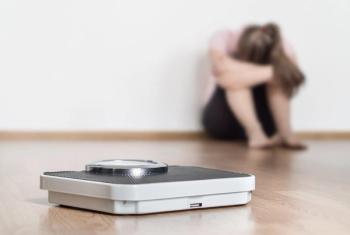
Unmet Needs in the Diagnosis of Axial Spondyloarthritis
Atul A. Deodhar, MD, explains why axial spondyloarthritis is challenging to diagnose and reinforces the need for educational efforts to help raise awareness among patients and the healthcare community and improve how the condition is managed.
Transcript
Atul A. Deodhar, MD: It takes so long in the United States to diagnose somebody with axial spondyloarthritis, and I’ll give you a number. We did a study on this and found out that in the United States, it may take as long as 14 years from the start of back pain to diagnose somebody with axial spondyloarthritis. And that’s unbelievable, but it is true. And there are several reasons. The No. 1 reason is that patients with back pain may not go to the primary care doctor. They might go to other healthcare professionals, such as a chiropractor, such as an osteopath, such as a physical therapist, or they might go to their primary care physician.
As I said, nearly one-fifth of the population has chronic back pain…. You take all these patients with chronic back pain, and 5% are going to be have inflammatory back pain and axial spondyloarthritis. So there is this tendency for the doctors to think, “Oh well, this is so rare. Common things occur commonly.” And then patients with axial spondyloarthritis may be mistakenly diagnosed with mechanical back pain.
These are some of the reasons. And the total understanding of this condition in nonrheumatology is still at an early stage, I should say. This concept of axial spondyloarthritis itself is new. People understand ankylosing spondylitis…, but the earlier stage and how to diagnose that is somewhat rare. These are some of the reasons why there is a big delay in the diagnosis of this condition in the United States.
To improve the diagnosis or find these patients early on, we need to improve our educational efforts. We need to find out where patients go when they have a backache. We need to target primary care physicians, family practice doctors, and internal medicine doctors. They are the ones who might be seeing these patients first. We also need to target osteopaths, chiropractors, physical therapists, and even spine centers. My own university has a spine center where patients will go for back pain. These are run by orthopedic surgeons, neurosurgeons. They could be physiatrists, physical medicine, rehabilitation doctors. There can be pain doctors. They need to understand the difference between chronic mechanical back pain, which is very common in the general population, and the small percentage of patients with back pain who actually have a medically treatable condition. So educational efforts would be one.
Secondly, we are also looking at how to improve the understanding of this condition in the general public. The Spondylitis Association of America is the society of patients, and it drives the educational efforts about this condition to the general public. We are also looking at improving the chatter on social media. When somebody has a backache, what types of questions are they asking on social media? Where are they going? Are people aware that this condition…could be medically treated? So educational efforts should be enforced to doctors—the providers who actually see these patients—as well as the general public. There has to be an increased awareness among the general public to get a quicker and earlier diagnosis.
Newsletter
Stay informed on drug updates, treatment guidelines, and pharmacy practice trends—subscribe to Pharmacy Times for weekly clinical insights.














































































































































































































